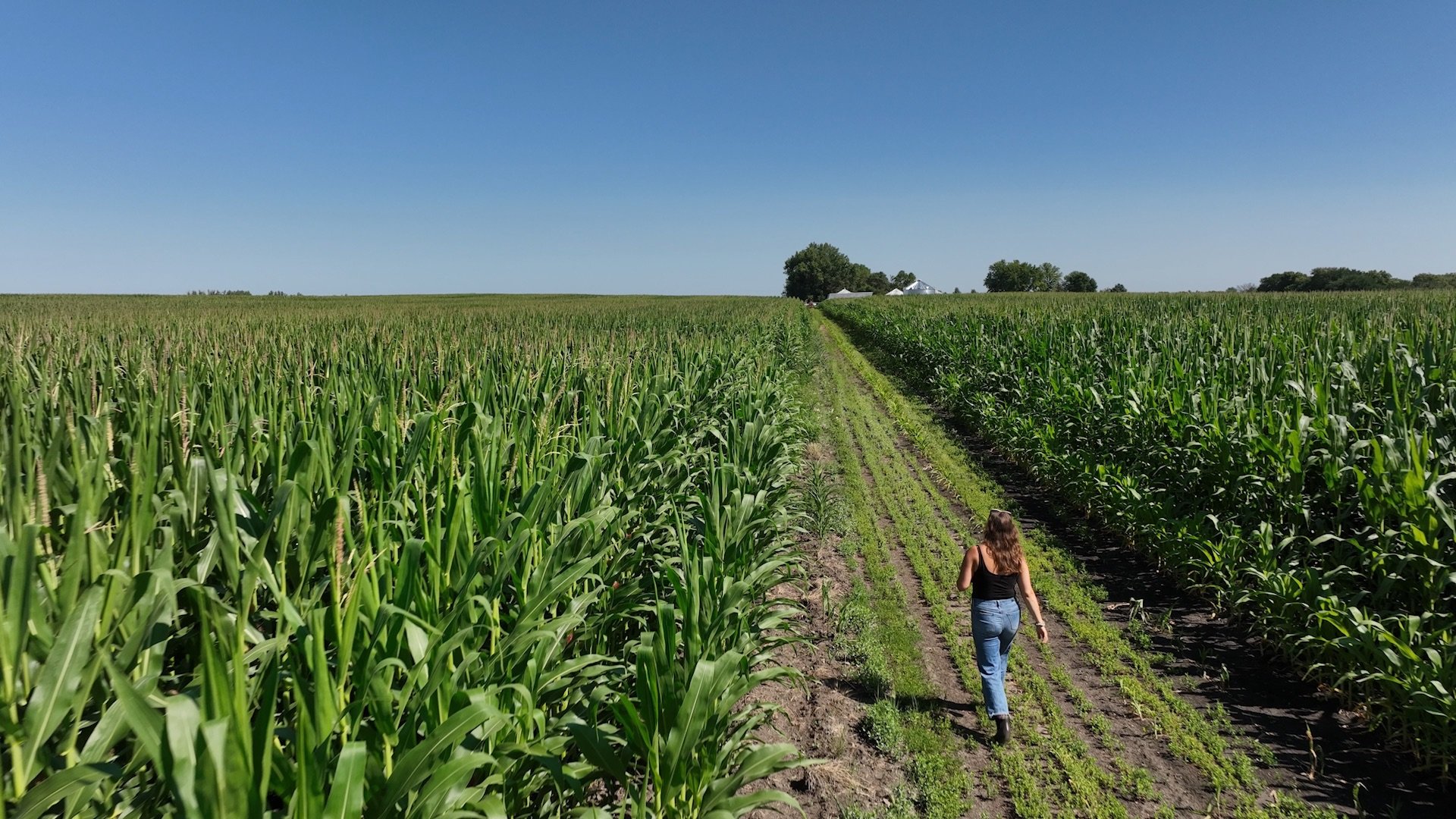Why aren't we seeing more change in the Midwest? Growers explain the challenges in latest segment of 'Alt-Meat Revolution.'
Consumer interest in plant-based protein, seen in the demand for alternative meat products, offers the promise of a more diverse agricultural landscape. Producers of alt-meat products are turning to crops ranging from yellow peas to mung beans to produce the flavorful replacements for meat and eggs that meet consumer expectations.
Therein also lies the challenge: Introducing new crops to an agricultural landscape dominated by corn and soybeans is an immense challenge.
That’s what Amanda Anderson with Pioneer PBS makes clear in “Give Peas a Chance?," the third episode of “Minnesota’s Alt-Meat Revolution,” now streaming on YouTube.
PURIS, one of the leading producers of plant protein, operates the largest pea protein plant in North America in Dawson, MN to extract protein from yellow peas. While these peas can be raised in western Minnesota, for most farmers, they're not economically competitive with corn and soybeans, which dominate the landscape around the facility to this day.
The company sources its yellow peas mainly from locations in western South Dakota and Montana on lands that are outside the Midwest corn belt. The company’s procurement specialist told Pioneer PBS that he puts 60,000 to 70,000 miles a year on his vehicle in search of new growers.
Why are there no fields of yellow peas around Dawson? Anderson and her crew traveled to near the Canadian border in North Dakota to the Belgrade and Madison areas of western Minnesota to talk to farmers raising specialty crops to learn why that is. She learned what they are up against in raising new crops.

No one is more familiar with the challenges than Carmen Fernholz, a lifelong organic farmer in Lac qui Parle County. He is now mentoring Luke Peterson, who continues that tradition on the A-Frame Farm started by Fernholz. “Actually, the market is the biggest challenge, for sure,” Fernholz told the West Central Tribune about what it takes to introduce a new crop. Fernholz is part of a cooperative known as the Perennial Promise Growers Cooperative that is working to promote the development of an intermediate wheatgrass trademarked as Kernza.
The perennial plant builds soil health and reduces erosion, producing both a grain for human consumption and forage for livestock. Most importantly, Kernza can offer farmers that much desired “third crop” to rotate with corns and soybeans, Fernholz noted.
He’s been raising Kernza ever since 2011, when Dr. Don Wyse of the University of Minnesota’s Forever Green Initiative provided him the first seeds. Fernholz said the agronomic challenges “have been pretty much been taken care of.”
The challenges are not only those of building markets for the crop but also opening the way for more farmers to raise it. Fernholz said growers are always looking for alternatives to corn and soybeans, but current federal farm policy does not provide crop insurance subsidies for crops like Kerzna. In contrast, federal policy provides roughly a 60 percent subsidy for crop insurance to raise corn and soybeans, Anderson’s Pioneer television team discovered.
Reily Bata, a fifth-generation family farmer in North Dakota, told Anderson how he began raising yellow peas that can be processed by the PURIS facility in Dawson. His motivation is to provide diversity on his farm and build its soil. His farm is on the northern edge of the corn belt, “and corn is moving its way up here,” he told Anderson. The support that crop insurance provides makes it difficult for others to take the risk of a new crop.
Peterson is taking those risks on the A-Frame Farm for the purpose of diversifying the landscape. But he pointed out that the lack of crop insurance keep many from taking those risks.
Patrick Miller, an insurance agent in Lac qui Parle County who also farms, pointed out some of the reasons why. Farmers make a big investment to put a crop in the ground each year, and must deal with major costs for equipment and land. Their bankers need assurance. The availability of crop insurance and access to markets are the big factors in providing the assurance needed.
Virtually every rural community has one or two locations to bring corn and soybeans to market, Miller said. That’s not the case for other crops.
The need to build the markets needed by growers of crops other than corn and soybeans is exactly why the first steps taken by the Perennial Promise Growers Cooperative was to retain professionals with experience in marketing, according to Fernholz. He remains optimistic.
Kernza’s benefits to soil health and the environment are major selling points to consumers and growers alike. “Our mission is to not only sell the grain, but also the benefits of the grain,” he explained.
Despite all of these challenges, he still fields calls from farmers in Minnesota and other states interested in Kernza as a crop to raise. Stewardship motivates them, despite the challenges.
“Farmers know in their hearts what’s right,” he said.
"Minnesota’s Alt-Meat Revolution" is produced in partnership with West Central Tribune and Pioneer PBS. Stay tuned for more #MeatlessInMN
Discuss and engage with us on Facebook, Instagram, Twitter and TikTok by using the hashtags #MeatlessInMN and #MyHomeIsHere and tagging us @worldchannel. Subscribe to our newsletter and YouTube for more features including events and interviews.
Enjoy our content? Consider donating to keep important storytelling like this going, and find more on PBS Passport.



